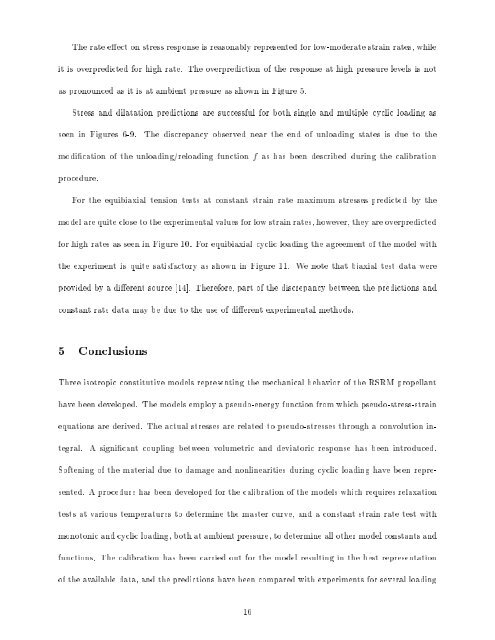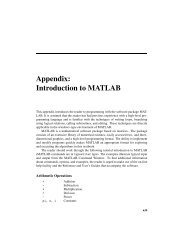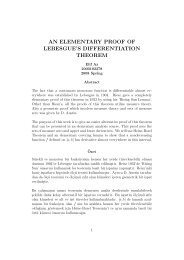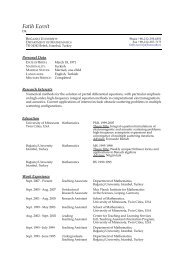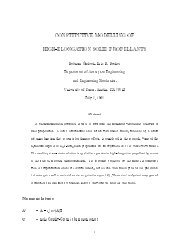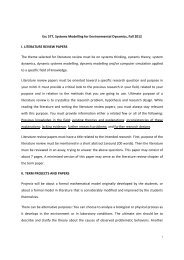CONSTITUTIVE EQUATIONS FOR SOLID PROPELLANTS
CONSTITUTIVE EQUATIONS FOR SOLID PROPELLANTS
CONSTITUTIVE EQUATIONS FOR SOLID PROPELLANTS
Create successful ePaper yourself
Turn your PDF publications into a flip-book with our unique Google optimized e-Paper software.
The rate eect on stress response is reasonably represented for low-moderate strain rates, while<br />
it is overpredicted for high rate. The overprediction of the response at high pressure levels is not<br />
as pronounced as it is at ambient pressure as shown in Figure 5.<br />
Stress and dilatation predictions are successful for both single and multiple cyclic loading as<br />
seen in Figures 6-9.<br />
The discrepancy observed near the end of unloading states is due to the<br />
modication of the unloading/reloading function f as has been described during the calibration<br />
procedure.<br />
For the equibiaxial tension tests at constant strain rate maximum stresses predicted by the<br />
model are quite close to the experimental values for low strain rates, however, they are overpredicted<br />
for high rates as seen in Figure 10. For equibiaxial cyclic loading the agreement of the model with<br />
the experiment is quite satisfactory as shown in Figure 11. We note that biaxial test data were<br />
provided by a dierent source [14]. Therefore, part of the discrepancy between the predictions and<br />
constant rate data may be due to the use of dierent experimental methods.<br />
5 Conclusions<br />
Three isotropic constitutive models representing the mechanical behavior of the RSRM propellant<br />
have been developed. The models employ a pseudo-energy function from which pseudo-stress-strain<br />
equations are derived. The actual stresses are related to pseudo-stresses through a convolution integral.<br />
A signicant coupling between volumetric and deviatoric response has been introduced.<br />
Softening of the material due to damage and nonlinearities during cyclic loading have been represented.<br />
A procedure has been developed for the calibration of the models which requires relaxation<br />
tests at various temperatures to determine the master curve, and a constant strain rate test with<br />
monotonic and cyclic loading, both at ambient pressure, to determine all other model constants and<br />
functions. The calibration has been carried out for the model resulting in the best representation<br />
of the available data, and the predictions have been compared with experiments for several loading<br />
16


